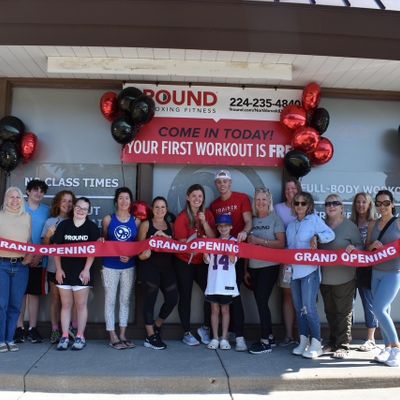How to Engage Your Core During Exercise

If you’ve ever worked out under the supervision of a trainer, like you do at 9Round, then you’ve likely been told time and time again to “engage your core” while exercising. This popular phrase is commonly said at many fitness studios, but if you’re like most people, you’re probably scratching your head and wondering what exactly does that mean and why does it matter if I “engage my core” or not? Well, we’re here to explain.
First, What is Your “Core?”
The core refers to all the muscles that make up the trunk of your body extending from your rib cage all the way down to your pelvis. This includes multiple muscle groups, including your transversus abdominus, the rectus abdominis (a.k.a. the six-pack), your internal and external obliques, the pelvic floor, back extensors, and even your diaphragm.
One important thing to note is that your core muscles are always at work, no matter what type of movement you’re doing—whether it’s performing push-ups at your local studio or carrying in a hefty load of groceries from the car.
Why is Core Engagement Important?
Having a strong core is essential for almost everything you do in life, from exercising at 9Round to simply sitting upright at your desk. Building a stronger core helps improve your functional strength for normal, everyday activities, such as moving heavy boxes at work or lifting a suitcase into a plane’s overhead compartment while traveling.
Additionally, engaging your core properly during exercise can also improve your overall performance because you’re able to maintain your balance and stability more easily, which can help you tackle other exercises more effectively. This helps you take advantage of a particular movement’s benefits without putting extra strain on other areas of your body.
For example, when your core is engaged correctly during exercise, you can perform push-ups without putting too much stress on your lower back muscles, which is a common problem people run into. This is because engaging the core during push-ups helps stabilize the spine and straighten out your back to prevent unnecessary movement in between each rep.
How to Engage Your Core
If your Champion Trainer at 9Round nudges you to engage your core while exercising, they are trying to get you to brace or control your core muscles to create more stability in your mid-section. Doing this will take some practice, as it takes time for you to understand the particular feeling you’re looking for here.
Also, there’s more than one way to engage your core during exercise depending on the movement you’re doing or the specific position you’re trying to hold—think about the difference between planks and crunches. In general, there are three types of muscle contractions that will help you engage your core.
However, do note that these muscle contractions are not exclusive of one another and that they often work alongside each other to help you complete various activities or exercises throughout the day.
Concentric Contractions
Concentric contractions are used to generate movement. The best example of concentric contraction in the core is when you perform a crunch. While doing crunches, your core muscles contract concentrically to pull your ribs in toward your hips as you lift your upper body off the ground.
During this motion, your muscle starts to shorten because the force created is less than the muscle's maximum. Concentric contractions typically use more energy compared to the other types of contractions, but they also generate less force.
Eccentric Contractions
Now, the opposite of a concentric contraction is an eccentric contraction, which happens when a muscle lengthens to help resist external force that is greater than the force that the muscle can generate. If we use crunches as our example again, the eccentric contraction occurs when you’re lowering your body back down to the floor.
During this movement, your muscles are lengthening to control the rate at which your body reaches the floor. From this example, we can see that eccentric contractions are often used to decelerate movement or slow things down while exercising.
Isometric Contractions
Some exercises are able to generate enough force that it becomes equal to the external load without lengthening or shortening the muscle—this is referred to as an isometric contraction. You could also refer to isometric contractions as abdominal bracing.
This type of contraction requires a lot of energy because it generates a lot of force—this force is often used to inhibit movement rather than to create it or slow it down. A perfect example of an isometric contraction is when you use your core muscles to balance your body and hold still during a high plank.
Now that you understand the three types of muscle contractions that occur, you can start to recognize them during your KILLER workouts and make small adjustments to ensure you’re engaging your core. If you’re ever unsure of your exercise form, you can call for your Champion Trainer to come take a look and make suggestions on the spot!


